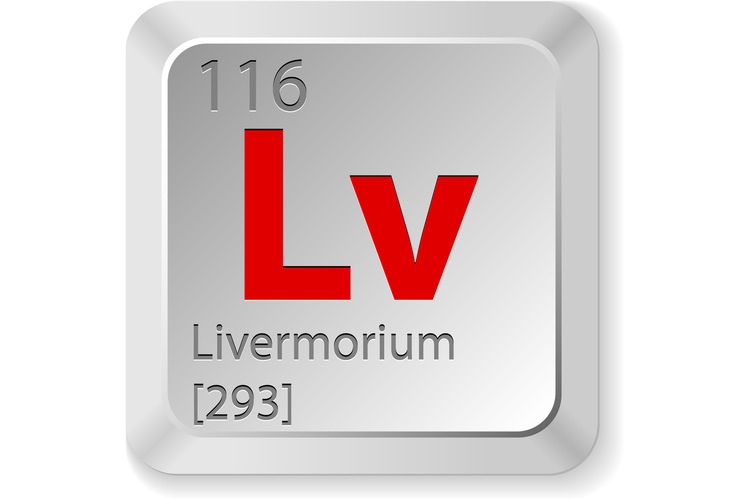Facts About Livermorium

Atomic Number: 116 Atomic Symbol: Lv Atomic Weight: [293] Melting Point: Unknown Boiling Point: Unknown
Word origin: Livermorium is named for the Lawrence Livermore National Laboratory in California. The name was officially given by the International Union of Pure and Applied Chemistry on May 31, 2012; prior to that, it was known as ununhexium — one-one-six in Latin.
Discovery: Livermorium was created by scientists at the Joint Institute for Nuclear Research in Dubna, Russia, in 2000. On December 6 of that year, it was jointly announced by the Russian scientists and scientists at the Lawrence Livermore National Laboratory.
Properties of livermorium
Livermorium is a radioactive, artificially produced element about which little is known. It is expected to be a solid and classified as a metal. It is a member of the chalcogen group.
Livermorium has four isotopes with known half-lives, all of which decay through alpha decay. The most stable is 293Lv with a half-life of about 53 milliseconds.
The atomic weight for manmade transuranium elements is based on the longest-lived isotope. These atomic weights should be considered provisional since a new isotope with a longer half-life could be produced in the future. [See Periodic Table of the Elements]
Sources of livermorium
The scientists who created livermorium bombarded curium atoms with calcium ions, producing livermorium and four free neutrons.
Uses of livermorium
Since only a few atoms of livermorium have ever been made, it has no practical uses outside of scientific study.
(Sources: Los Alamos National Laboratory, Jefferson Lab)
Sign up for the Live Science daily newsletter now
Get the world’s most fascinating discoveries delivered straight to your inbox.











